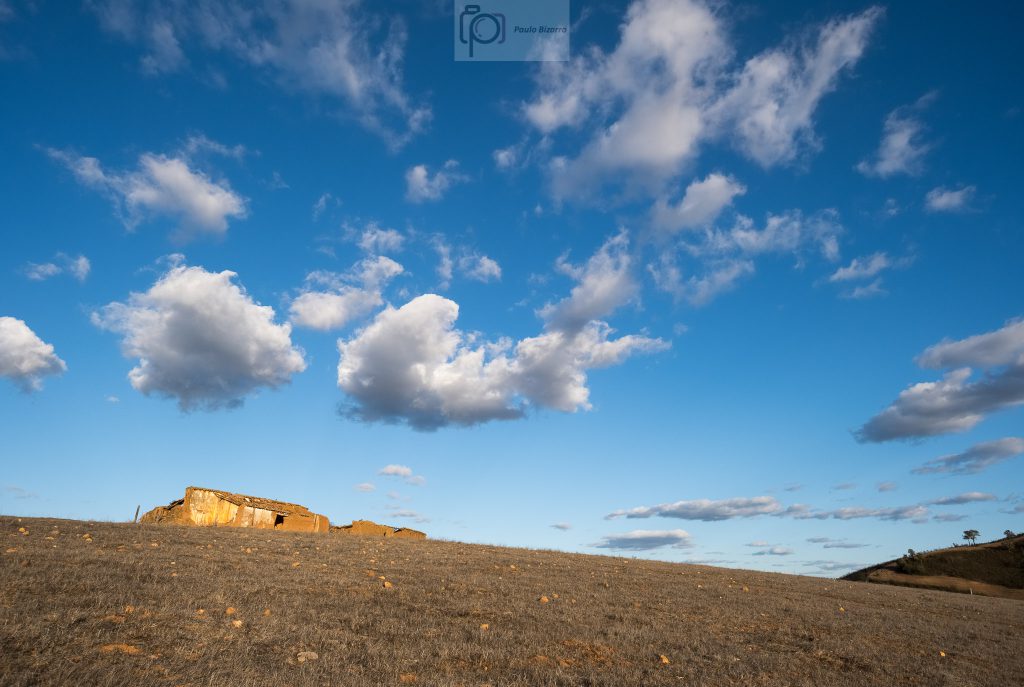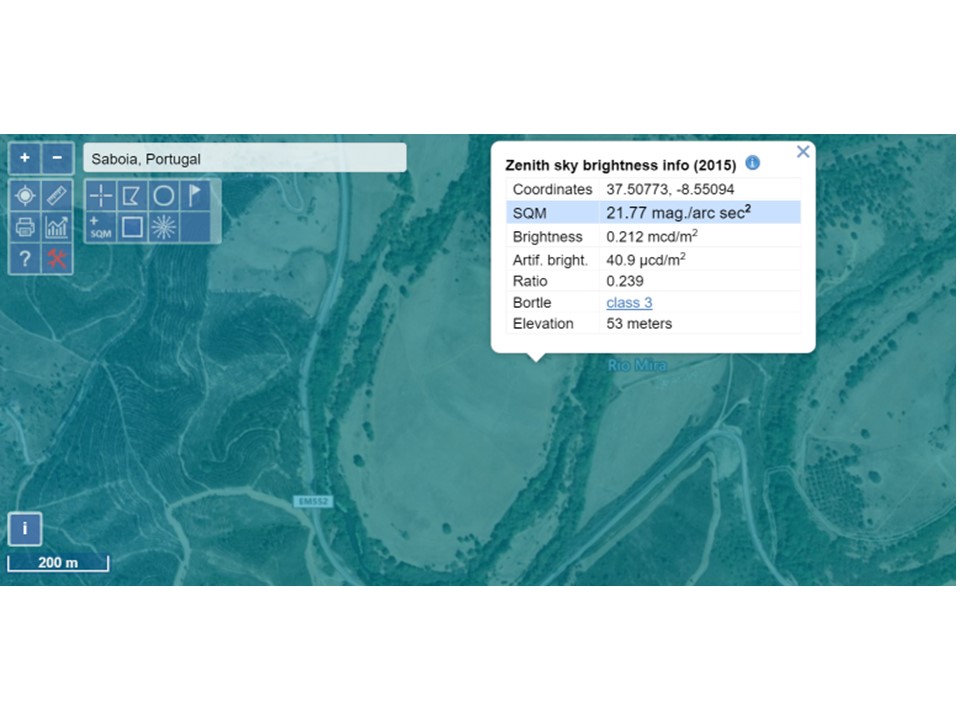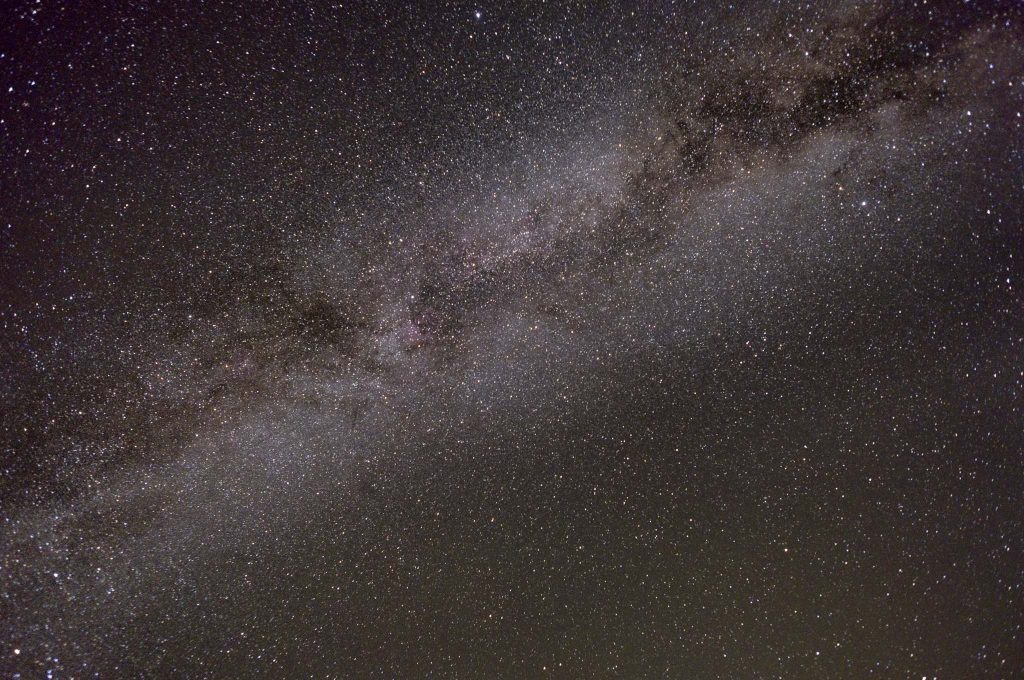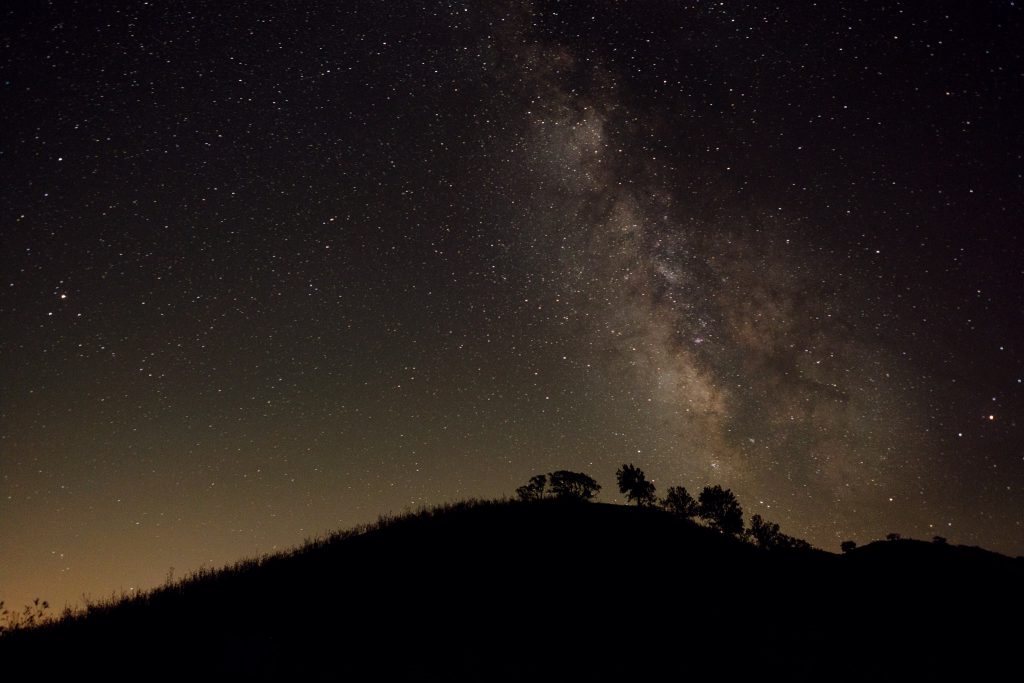Summer is an excellent time to be out in the field photographing the night sky. At a dark site location during the new Moon, and with clear skies, conditions are good to make some interesting photos such as star trails and the Milky Way. It is better to choose a place as far from light pollution as possible, so you have a clear and detailed view of the stars. In the region of Odemira, I like to go to the rural interior, far away from the coastal villages. I like to go to an area between Odemira and Sabóia that I know from past experience to be quite dark. There is a small hill with a ruined farmhouse that faces south, so it provides an interesting foreground for a star trail. Below is a photo that I made a few months ago.

According to light pollution maps, this location has a classification of 3 on the Bortle scale (rural sky), which means that there is some light pollution in the horizon and the Milky Way’s complex structure is visible. Below you can see the map with the classification.

I arrived at the location with enough time to set up my tripod and camera, selecting a composition featuring the farmhouse in the foreground. My 14mm wide-angle lens is only f/2.8, which is not ideal for night sky photography. Still, with some careful workflow, the results can be good. My camera has an intervalometer, so it is easy to set it up for shooting a series of consecutive frames to be assembled later in Sequator, the software that I use for building the star trails and stacks. I normally shoot Raw, f/2.8, 30 seconds, and ISO 1600. This works fine with Fuji X cameras.
For star trails, it is important to turn off the long exposure noise reduction, as that would take an extra 30 seconds dark frame after each shot, doubling exposure time and introducing gaps in the trail. Then, you just select how many frames you need to achieve the total exposure time you want your trail to have. I normally aim for about 1 hour total time, as that provides a nice circular trail around Polaris.

After finishing the star trail shooting, I also took some photos of the Milky Way, to stack later in Sequator using the “align stars” option. Usually I take between 6 and 10 photos for each stack. If there is some “land” in the frame, ground features will be blurry as result of the Earth’s movement.


For comparison, the following photos are single exposures of the Milky Way over the surrounding countryside. These do not have the blurriness of the land features (such as trees), but have less light gathered, compared to the stacked ones. I like the results from both options.


I always enjoy photographing the night sky, and look forward for the next opportunity to do so.